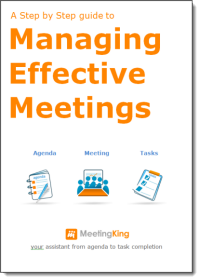Hybrid meetings are becoming more and more common in business. Hybrid meetings are when a combination of in-person and virtual elements are used to run the meeting. Hybrid meetings can be particularly useful for companies that have some employees that are teleworking, or people that are located in different places. In these situations some people will be in the meeting room, and others will be elsewhere and may use telephone conferencing, web conferencing or video conferencing tools to communicate with everyone. Such meetings can be challenging to manage especially since using visuals can be hard if not planned effectively. However these meetings have a great advantage in terms of cost, since they can mean that people do not necessarily have to travel to get to them.
One of the biggest challenges with hybrid meetings is that people tend to work on other tasks at the same time if they are not in the room with others. Morell (2010) states that 62% of people multitask during webinars. Getting the attention of everyone and keeping it is a skill that meeting organizers of hybrid meetings have to master. With meetings that are held using video conferencing technology this is somewhat easier, as it is possible to see what participants are doing to some degree, but with web conferencing it can be an issue. One way around this may be to agree a set of norms for all participants before the meeting, or to make a rule that people are not allowed to multitask during the meeting, even if they are not there in person. In fact, those that are not there in person have to pay even greater attention, arguably, since they are not able to see everything that is going on, or to pick up on body language.
One important aspect of successful hybrid meetings is to ensure that the technology works and brings people together effectively. There is of course the technology for communication (WebEx, GotoMeeting, phone and other conferencing systems), but technology to manage documentation is equally, if not more important.
It is essential that all participants have the same information before, during and after the meeting. Meeting facilitation tools like MeetingKing allow agendas, minutes and supporting materials to be easily shared between participants online, and allow tasks to be assigned and tracked. All this helps to support hybrid meetings by adding structure to make sure that everyone is “on the same page” following the meeting. Using technology means ensuring that everyone understands how it works and is sufficiently trained to be able to use it effectively.
Distributing documents during the meeting to the participants who are present is bad practice in general, as participants cannot prepare, but is even worse for the virtual attendees. Sending information during the meeting can lead to multitasking by those participants, leading to reduced attention and a less effective meeting overall.
Hybrid meetings can be very successful if planned and organized in an effective manner. They can also save the business money. Learning how to handle them effectively is an important skill that meeting organizers must develop.


